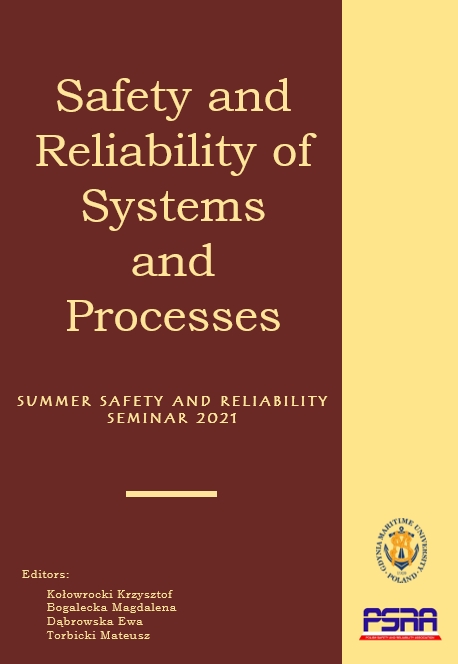
Monograph - 2021
 |
Monograph Information
Title
Safety and Reliability of Systems and Processes
Summer Safety and Reliability Seminar 2021
Editors
Kołowrocki Krzysztof, Poland
Bogalecka Magdalena, Poland
Dąbrowska Ewa, Poland
Torbicki Mateusz, Poland
Publisher
Gdynia Maritime University, 2021
ISBN 978-83-7421-354-7 (printed)
e-ISBN 978-83-7421-355-4 (eBook)
DOI: 10.26408/srsp-2021
Language
English
Licence


|
Comprehensive model of operation process of complex technical system designed for simulation purposes
MALINOWSKI Jacek 
Systems Research Institute, Polish Academy of Sciences, Warsaw, Poland, jacek.malinowski(at)ibspan.waw.pl
DOI: 10.26408/srsp-2021-15
ABSTRACT: In this chapter the author presents a comprehensive model of a multi-component technical system aimed at simulating and optimizing its operation process. Among other things, the model postulates load-related dependencies between the system's components and delayed repairs or replacements scheduled according to the components' priorities, where delays result from limited maintenance personnel. During the last several decades researchers in the field of reliability theory constructed various maintenance models, more or less applicable to real systems. Many authors follow purely analytical approach which, due to restrictive assumptions adopted for the purpose of analytical tractability, results in limited applicability of the considered models. These assumptions include: mutually independent components, exponentially distributed time-to-failure and time-to-repair, repairs started immediately after failures or carried out in negligible time, etc. The model proposed here does not impose such limitations, because it is designed to use simulation rather than analytical methods for computing purposes. The following assumptions bring the model closer to reality in comparison with its counterparts from the literature: 1) components are mutually dependent, i.e. a component's failure rate can depend of the states of some other components 2) after a repair a component can be "as good as new", "as good as used" or "as good as old" (perfect, imperfect, or minimal repair) 3) if maintenance personnel is busy, newly failed components await repair in a priority queue, 4) the state of a component may be hidden and its failure can only be revealed by inspection. The chapter's main result is a quite elaborate algorithm simulating the modeled system's behavior over time. Examples are given how, based on the proposed model and the adopted maintenance policy, selected reliability-related parameters can be optimized by repeated simulation. Although computationally intensive, the simulation approach allows to find performance and reliability characteristics for systems whose complexity or way of functioning rule out the application of analytical methods.
KEYWORDS: system, operation process, dependent components, maintenance policy, discrete-event simulation, optimization
To cite this chapter:
Malinowski J. 2021. Comprehensive model of operation process of complex technical system designed for simulation purposes. In K. Kołowrocki et al. (Eds.), Safety and Reliability of Systems and Processes, Summer Safety and Reliability Seminar 2021. Gdynia Maritime University, Gdynia, 293-304, doi:10.26408/srsp-2021-15.



















![]()